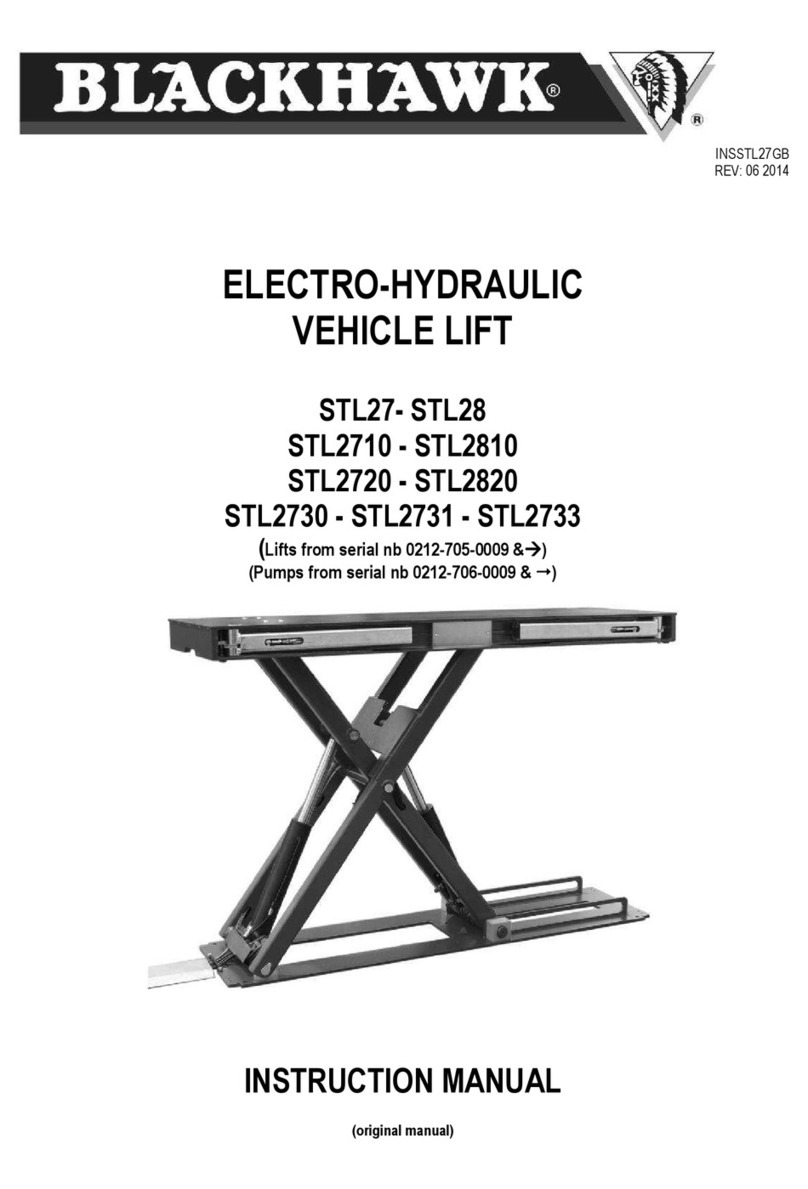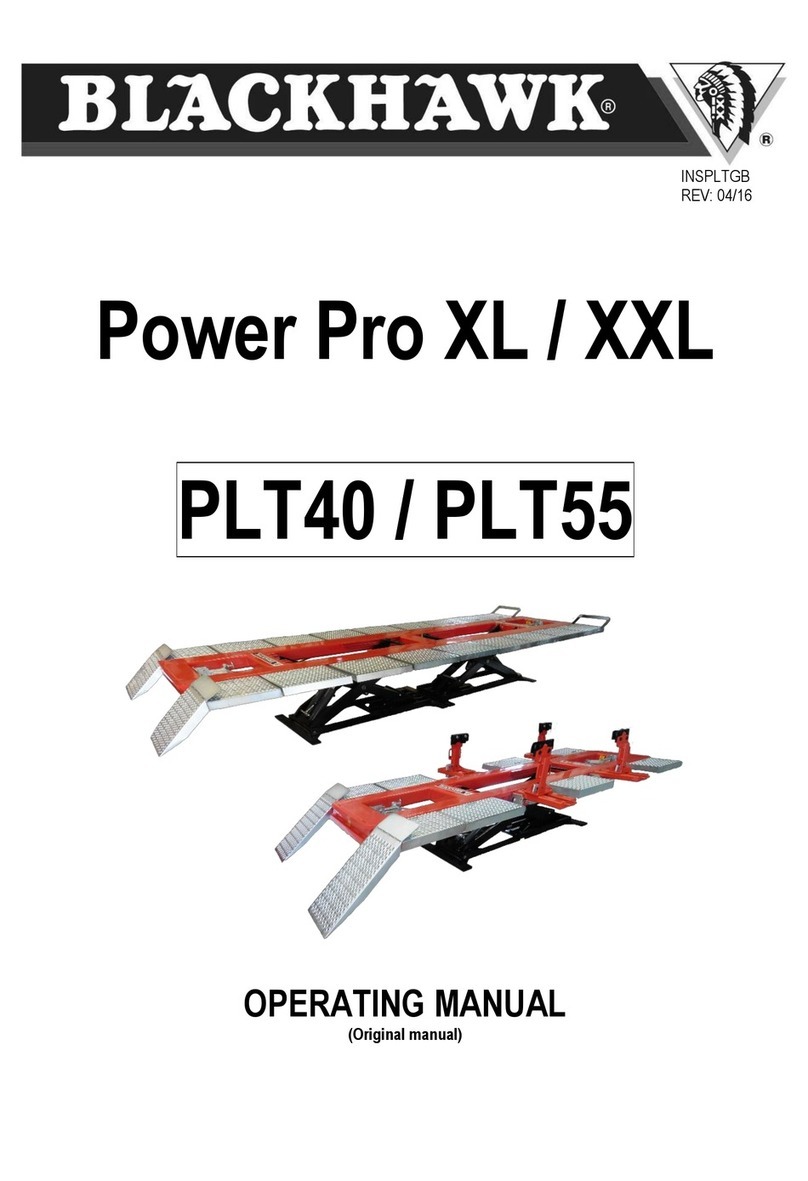
___________________________________________MPT60______________________________________
9
RISKS DUE TO LIFTING
DANGER
Automobile bodywork and chassis lifting systems are designed to use extensive force. Incorrect installation or
preparation, insufficiently secure attachment of the vehicle and its accessories, and the use of chains or other
equipment which is faulty, damaged or overloaded, risks causing material damage or injuries, or even fatal
injuries.
ATTENTION
Do not use an extra hydraulic ram in addition to the one used with the straightening arm delivered with the
MINIPOST, as it may cause material damages or injuries.
CAUTION
Wear individual protection equipment (safety shoes , gloves ) and tight-fitting work clothes
do not wear hat, scarf, etc.) during installation and use.
-Only use BLACKHAWK® chains and accessories of the type supplied
with this equipment. Display in your workshop, explain and observe
the safety and storage instructions supplied with the pulling chains.
-Do not use the BLACKHAWK® pulling chains provided for lifting or
load handling.
-Do not pull with chains without using the safety cable.
-Do not wind chains, slings or straps around sharp parts of the bodywork, due to the risk of damage.
-Do not stand in front of or behind the pulling mechanisms during use.
-Always make sure that the clamps and anchoring and pulling accessories are correctly fitted.
-Keep clamp jaws clean to avoid any slippage. Replace worn or deteriorated jaws.
-Always attach the pulling arm and properly secure it to the frame before lifting it or carrying out a pulling
operation. Position the arm rotation locking pins before any pulling.
-The rotation of the pulling arm in order to adjust the pulling angle must only be carried out after the arm has
been attached and locked to the chassis. Put the pulling arm back in a straight position and secure it using the
pins before removing it from the chassis.
-Do not exceed the maximum authorised capacity of the pumps (700 bars).
-Do not operate the hydroelectric pump in areas which may contain combustible vapours.
-Before carrying out any welding operations, make sure there are no fuel leaks which could cause a fire or
serious burns, and take the usual precautions when working with welders.
-Do not leave the engine switched on, as this may cause intoxication due to exhaust fumes.





























